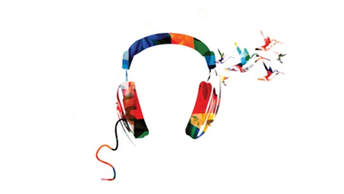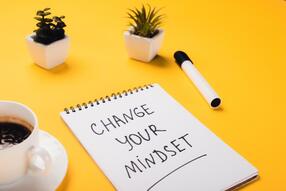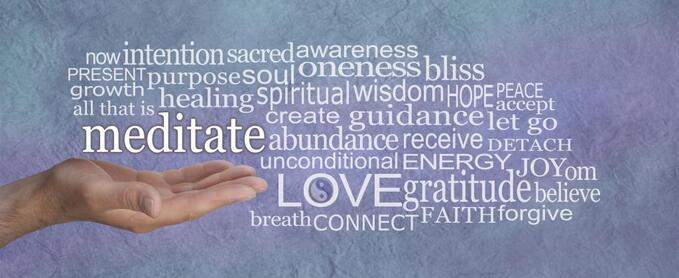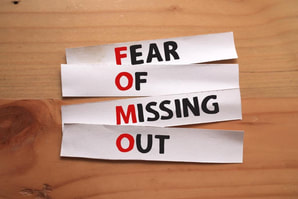 By Marilyn Erickson, APRN While the term, “superfoods”, is often seen and is an overrated phrase, there are actually at least three foods that have evidence to support them being called superfoods. In this article, three superfoods will be discussed and several terms that refer to food components found in these foods will also be explained to help you understand the benefits of the foods. One superfood that is supported by evidence is garlic. Garlic is a vegetable that can be eaten raw or cooked. Garlic contains several sulfur-containing phytochemicals. Phytochemicals are plant-based elements that we require not only for nutrition but also for detoxification, protection against inflammation and DNA repair. Specifically, garlic lowers circulating markers of oxidative stress and inflammation. Supplementation with garlic can lower total cholesterol levels and improve other aspects of cardiovascular health including lowered blood pressure (studies show moderate improvement for both cholesterol and blood pressure). A disadvantage of garlic, especially raw garlic, is accompanying body odor or “garlic breath”. Some supplements can reduce this effect, such as “aged garlic” extracts. Aged garlic does not have the fresh garlic scent. Also, garlic can be toxic if consumed in high doses, so maximum doses should not be exceeded. For example, for a person weighing 150 pounds, the upper limit is 17 grams. Another superfood is dark berries, like blueberries, red raspberries, strawberries, and blackberries. Dark berries also contain phytochemicals and anthocyanin which are water soluble flavonoids. Flavonoids are phytochemicals that produce several medicinal benefits including anticancer, antioxidant, anti-inflammatory and antiviral properties. They also have cardio-protective effects and neuroprotective effects. Health benefits of anthocyanins have been widely described as important in the prevention of diseases associated with oxidative stress like cardiovascular and neurodegenerative diseases. More recent evidence suggests that health-promoting effects attributed to anthocyanins may be related to the adjustment or balance of gut microbiota. Because dark berries can influence brain activity, older individuals can eat them to improve memory. This may also be true for younger people, but more research is needed. One-half to one cup of dark berries a day would be ideal. Another important superfood is leafy greens. Leafy greens are one of the most nutrient dense foods. Leafy greens include spinach, kale, Romaine lettuce, Swiss chard, beet greens and cabbage. They contain high levels of fiber, iron, potassium, magnesium and calcium. One study found that people eating just one serving (two cups of raw) leafy greens each day report a significant decrease in cognitive decline. During the digestive process, the greens release chemical compounds that ramp up detoxification. The fiber helps women clear out estrogen from the intestines before it can be reabsorbed into circulation. It feeds that all-important microbiome which, in turn, amplifies hormone and toxin neutralization and elimination. Vitamin K found in dark leafy greens provides many health benefits like protecting bones from osteoporosis and fighting inflammatory diseases. These three foods, really so easy to incorporate into our daily diet, help us in so many ways to improve our memory, decrease risks of inflammation and cancer, and are an aid in maintaining good cardiovascular and bone health.
0 Comments
 Daniel G. Weidner, MS, LMHP “It is our fear at experiencing ourselves directly that causes suffering” Mark Epstein, M.D. (To read Part I of this essay, please click here.) It is not uncommon to hear someone describe their dissonance as boredom or restlessness. The modern world provides a plethora of distractions that we routinely and often subconsciously employ to avoid this internal form of dissonance. We find “social media” as a handy escape from boredom and restlessness. This escape into social media can become psychologically addictive. We also use television, movies, food, hobbies, exercise, religion, sex, and other external activities as ways to avoid the sense of dissonance that can creep in to our lives. This is often very subtle, and can be almost entirely subconscious. I am not saying that there is anything wrong with any of the above listed sources of distraction. It is the use of these distractions in an effort to avoid the dissonance that can be harmful to our well-being. Thus the quote “It is our fear at experiencing ourselves directly that causes suffering”. Depending upon the circumstances of the individual, one may go to great lengths to avoid experiencing oneself directly. Mark Epstein says that “We are all engaged in a futile struggle to maintain ourselves in our own image”. Dukkha is sometimes described as “pervasive unsatisfactoriness”. This unsatisfactoriness can manifest in psychological stress, mental anguish, and even physical decline. Both Western Psychology and Buddhist Psychology tell us that avoidance is not a healthful response to stress or discomfort. This is where the practices of Mindfulness and Meditation can be sources of legitimate and sustainable forms of relief for our cognitive dissonance. Buddhist Psychology tells us that it is only when we are able to directly face and accept the sources of our discomfort that we will realize some relief. This is the opposite of distractedness. And this can be a frightening proposition. What we find when we engage in the practice of mindfulness is that the fear of knowing ourselves is unfounded. We learn that directly facing and accepting the vicissitudes of life is freeing and a relief. It is often referred to as “letting go”. Mindfulness means being present to whatever is happening here and now. When we want things to be different than they are here and now – that is suffering. Through mindfulness practices we begin to notice how the mind works and awaken to it. We begin to understand that thoughts are a condition that arises and passes. We come to the realization that we are not our thoughts, and that our fears and our dissonance are unnecessary. We learn to live within ourselves, accept ourselves for who and what we are and realize greater happiness and contentment with our lives – as they are.  Daniel G. Weidner, MS, LMHP “It is our fear at experiencing ourselves directly that causes suffering” Mark Epstein, M.D. This quote is from Dr. Epstein’s book: Thoughts Without A Thinker: Psychotherapy from a Buddhist Perspective. This book is a lucid and fascinating examination of the complimentary relationship between Buddhist Psychology and modern Psychotherapy. This book helps us to comprehend how understanding an emotional experience in the present moment, as it is happening, is different than the realizations that we can experience through the psychotherapeutic process of digging into our past. Both are valuable experiences on their own, but together they can help us to more completely get to know this person with whom we spend every day of our life - and through this process lead a more fulfilling and happier life. In the preface to the tenth anniversary edition of this book, Dr. Epstein (a practicing Psychiatrist) states: “Mindfulness confers upon us the capacity to relate to emotional life in an open, balanced, accepting, and tolerant way, while freeing us to act with compassion, rather than on impulse, in response”. “It is our fear at experiencing ourselves directly that causes suffering”. Suffering, known in Buddhist Psychology as Dukkha, can be understood (on a basic level) as having two parts: First, there is the discomfort, unease, or pain that we experience in association with an unpleasant or undesired event. This can be anything from stubbing your toe as you get out of bed, to the loss of a loved one – and everything in between. Colloquially we sometimes say “shit happens”. The second part of suffering is generally understood to be what we inflict upon ourselves as a result of the experienced unpleasant or undesired event. This can be viewed as our ongoing reaction (thoughts and feelings) following the event. A simple example is when someone says something unkind or critical to us. The event itself may last only moments or minutes. But the ongoing reactions to the event can go on for the rest of the day, and maybe for multiple days. We have thoughts like: “How could he/she talk to me like that?”; “That was so mean!”; “The next time that I see them I will give them a piece of my mind!”. You get the drift. We become the source of our own suffering – Dukkha. There is an internal, and perhaps more nefarious form of Dukkha that we can experience when we directly come face-to-face with ourselves. At a basic level this can be experienced as a form of Cognitive Dissonance. In the field of Psychology, Cognitive Dissonance can be described as the perception of contradictory information and the mental and/or emotional toll of that contradiction. It is typically experienced as the psychological stress that results in the clash between our beliefs and new perceived information. This clash causes some “discomfort” or “stress”, and we tend to seek some way to resolve the contradiction to reduce our discomfort. We may find ourselves trying to reduce this internal inconsistency (which is the source of our discomfort) by adding new parts to the cognition that is causing our psychological dissonance. Justification or rationalization of our beliefs or behavior is often the way that we go about finding some relief for our feelings of dissonance. We can also attempt to avoid circumstances and information that is likely to be the source of, and result in an increase of the dissonance. We often gravitate toward information (and experience) that is consistent with our current beliefs as a way to get some relief. This is known as confirmation bias. I posit here that it can sometimes be more challenging to deal with internal sources of dissonance than with external sources. This would be when self-held beliefs come into contact with information that is contradictory to said beliefs. It can often be just the fear of, or potential for, realizing this contradiction that can cause the dissonance. We will work to avoid and/or rationalize this conflict as a way to gain relief from the feelings of dissonance. Distraction is one of the primary strategies that we employ to either remove the feelings of dissonance or to prevent those feelings from arising at all. (PART II of this essay will be published in our May issue.)  by Laura Crosby This article is for the book lovers, the tender hearts, the deep(ish) thinkers, and anyone exploring life’s existential questions. It is a compilation of resources to nourish your heart-mind on a path of deepening peace and freedom. But first ... The Buddha said, “Nothing can survive without food.” A simple truth that speaks as literally to the state of the heart and mind as to that of the body. The sights, sounds, and ideas we consume every day condition our consciousness. Wholesome states like compassion, gratitude, and equanimity thrive and grow with nourishment, and can wane significantly without it. So too with unwholesome states — fear, hatred, anger. When we pay attention, we see this; feel this; know this. Thich Nhat Hanh taught that, “Mass media is the food for our eyes, ears, and minds … images, sounds, and ideas that are toxic can rob our body and consciousness of their well-being.” In fact, he once vowed, “to ingest only items that preserve well-being, peace, and joy in my body and my consciousness.” While this path may seem extreme, it points to the agency we can have over how and what we ingest (for the heart-mind) and what we nurture in doing so. Going deeper, it invites awareness, intention, discernment, and mindful choice around what will best preserve our own well-being, peace, and joy. In that spirit, offered here is a medley of works curated for their potential to soothe, nourish, and sustain. May something in them feed your peace and freedom. Meditations + Music
Voices + Insights
Art + Books
“Be mindful of what you watch, read, and listen to, and protect yourself from the fear, despair, anger, craving, anxiety, or violence they promote. The material goods they promise are only quick, temporary fixes.” ― Thich Nhat Hanh, Savor: Mindful Eating, Mindful Life  By Pamela Mueggenberg, LMHP, MA I’ve been losing my words lately. Covid finally hit my house for winter this year, and two months later I can tell that my brain is still recovering from hosting its unwelcome guest. It’s not as though I’m forgetting words, having them lounge on my tongue until they’ve run off on a beach vacation to find themselves. It’s more like the words are sleeping in my brain; even with alarms and klaxons and their nest shaking in frustration, they continue to snooze completely untroubled by their rampant absenteeism. Often my mind attempts to find a way around the word, trying to communicate the emotion or image even if the sound is gone. I was as surprised as anybody when I called wrapping paper “surprise blankets” and my cat as “anger fluff.” I was talking to a friend of mine, a speech therapist, who gave me a few tips to help me find my words again. “The biggest challenge is not to freak out,” she said. “When you can’t find the path to a word our first inclination is to clamp down and force your way through. Take a breath, remember you’re not crazy, and it will come to you eventually.” This struck me as really good advice. We are all faced with the unknown - what will happen today, this year, this decade. What challenges and injuries we or our loved ones will encounter. What we think we can control when really, we’ve just been lucky so far. This time in history has stripped away some of the security we took for granted, and it makes sense that we would fill in the gaps of our knowledge with assuming the worst. How many times have you heard the phrase “end of the world” this week? We are facing serious challenges and have a lot of work ahead of us but the assumption that the unknown is imminently doomed isn’t true. The truth is we don’t know. And not knowing is not the same thing as annihilation. Instead, let’s take a breath. Remember who you are. And the future will come. And when it does, you will have an opportunity to show your values and strengths and keep those you love in your heart. You have those same opportunities today, and today we can choose what to do. So, plant a garden, hug your friends, pick up trash, and live a life you’re proud of. And the words will come. To read the complete newsletter, click here.  By Marilyn Erickson, APRN Instead of making resolutions for this new year, why not make a commitment to feed your own inner self, open into possibility, open your branches wide to the magic around you and within you. Step out of making yourself small, wrong, or comparing yourself with everyone else. Does that sound difficult? One way to sort of take this apart and apply it to your own personality is to look at what personality might fit you the best? Are you a controller? Are you a pleaser? Are you an isolator? Are you a distractor? When looking at possibilities, some descriptions of these characteristics that may be helpful are as follows:
Think about where you tend to lean. Then consider what is possible, what can foster growth. Consider the actions you take. Are they from fear or do they come from your center? While these primary characteristics guide our actions, we still can discover what we have covered up and what has been hidden. We can uncover our gifts.
How you perceive yourself, whether it be one of these four characteristics or a combination or something else, you can create, lead, nourish, and have a vision for what is possible. While your perception of yourself may guide your actions, you can discover what is hidden, uncover your gifts. If you get caught up in “what if” way of thinking, practice thinking of the what if as a positive outcome. Thinking of a positive outcome helps overcome the fear. What if everything goes right and things unfold into possibilities. What if the challenges of your life help you to become more steady, more committed? For the isolating or distracting person, does this help to be more supportive of others so that the matrix of your relationships can shift in a positive way. What if you have so much to give and also to receive? Sometimes these what ifs are a means of criticizing yourself, judging. Do you see these old ways of looking at things in a negative light as keeping yourself safe? For example, you lock your keys in your car, you say to yourself, “Why did I do something so stupid?” Or can you say to yourself, “Oops, I locked the keys in the car. What am I going to do?” Talk to yourself in a soothing way, not in a judging way. Help build your own strength and courage through self-soothing. Use kind words to reflect yourself. Judging leads to loss of energy. You are responsible for how you talk to yourself. Learn to recognize the old voices that bring you down. Practice discerning rather than judging. Say to yourself, “I don’t agree with my own actions. What do I need to do differently?” See yourself with compassion, through loving eyes. All of these changes in ways of seeing ourselves take practice. Practice self-soothing, enriching, learning and trust in your intuition. Bring light to your life through listening, gathering the tools that will help you, staying steady, and nourishing yourself. Come into stillness, settle and listen. Open to possibility.  By the CML Practitioners Each year, as the wheel turns, the practitioners at CML take a moment to reflect on the coming year and a choose a word that might be a source of intention or focus for the months ahead. Here are our choices for 2024. "Non-Judgement / Nonjudgmental" - Dan Mindfulness practice can be defined as “paying attention, on purpose, to whatever is happening in the present moment in a nonjudgmental manner.” Non-Judgment (or non-judgementalness) from this perspective implies that one is (1) aware of (paying attention to) when thoughts of judgement are occurring, and (2) making the effort to be fully in the present moment without passing judgement. The mindfulness practice of non-judgement involves mentally noting (to one’s self) “judgement” when judgement occurs. I want to reengage with this practice for the new year as a way to reduce my own judgementalness. “Vulnerability” - Hillary In 2024, I want to lean into vulnerability. I have always been vulnerable, and I’ve always connected to others through vulnerability; however, I don’t think I’ve sat with the true power and healing potential of vulnerability until recently. What would it look like if leaders were more open and vulnerable about their insecurities and fears? What would it look like if society valued vulnerability as a strength? What would our world look like if we approached each other with the openness, curiosity, compassion, and (dare I say) love that often accompany vulnerability? What would our personal healing journeys look like if we approached ourselves in this way? I believe that nestled within vulnerability is hopefulness that someone (ourselves and/or others) will truly see (and truly love) us. I want to cradle that nestled hope in the year ahead. “Mystery” - Kara My word for the year is mystery. This word was inspired by a practice I engage in every year with my tarot cards. I add the month, day of birth together, and the upcoming year for one sum. This year the sum was 12 which corresponds with the Major Arcana card “The Hanged Man.” The Hanged Man pictures a person wearing a blue tunic (representing psychic connection) and red tights (representing material awareness) suspended from a mystical tree. The person’s legs make the shape of a four. The person appears serene, and their head is surrounded by light. This card symbolizes the power of taking a less familiar stance to perceive myself in a new way. This new perspective may be a clue for better understanding something that is difficult to understand, a mystery of sorts that lies within me. There is a sense of adventure embedded in the word of mystery, and my efforts to discovery what has yet to be known will guide me this year. “Peace” - Laura May I practice finding, making, and being peace in 2024. Finding the peace within and around me. Making peace with the impermanent, imperfect, uncertain, unknowable, and exiled. Being peace amidst confusion and hatred. May peace take its seat in my heart as an inseparable part of my being * -- not merely the peace of quiet, stillness, or refuge, but also the transformative peace that brings awakening and freedom to all beings. May this practice honor the legacies of beloved nonviolent peacemakers Thich Nhat Hahn, Mother Theresa, Gandhi, Malala Yousafzai, and Martin Luther King. ‘“You keep pairing me with quiet” peace said, “but my true companion is the mighty clamor of chains being ripped clean from the wall.” ~ Lori Hetteen *inspired by a quote from Gandhi “Poetry” – Louisa This coming year, I am trying to orient myself toward beauty. There is so much ugliness and hate in our world right now that it seems to obscure the true beauty of everything that lies around us. We look for what is flawed, what is “other”, what doesn’t belong, rather than stand in awe at the marvel of it all. And we must see the beauty of it, if we are to believe that it is worth saving. The idea of poetry seems to capture the essence of the lens that I hope to look through instead. Can we take the isolated dark words and painful images that surround us and rearrange them into something new? Something that speaks to our courage and ingenuity, rather than our hopelessness and fear. Where we are shown despair, let’s paint the colors of hope. Where we are told to be angry and reactive, let’s write the music of inspiration. When we believe we are unloved and alone, let’s dance in the downpour of compassion and community. When we hear that we should conform, let’s sing at the top of our lungs in our own unapologetic voices. Then stand together hand in hand, feeling the warmth of the sun on our faces, and smile at the beauty of it all. “I believed I wanted to be a poet, but deep down, I just wanted to be a poem” ~ Jaime Gil de Biedma “Light” - Marilyn There is so much to be said about light. As we move toward the winter solstice, we think more and more about light. We think how it greets us in the morning, how it leaves us in the evening. We celebrate the light even while we rest and reflect in the darkness. And we also consider the light inside us. We want the light to grow stronger within. We listen. We observe. We remember who we are. We notice our breath. We allow our spirit to breathe. Through these actions, we bring ourselves closer to the light. Amanda Gorman, the young American poet and activist tells us, “Only when we are brave enough to explore the darkness will we discover the infinite power of our light. Light must come from inside. You cannot ask the darkness to leave; you must turn on the light.” So in this darkest time of year, through quiet, rest, reflection, observation, and listening, remember that the light is always there.  By Louisa Foster, PsyD, RDT/BCT I am a recovering sufferer of FOMO. To the uninitiated (and it seems highly unlikely in contemporary American culture to be uninitiated), this stands for Fear Of Missing Out, a clever acronym to explain a compulsive need to overdo and forgo rest. Yes, I was the kid sitting at the top of the stairs when my parents entertained craning for a glimpse of a guest’s outfit, straining to hear snippets of “grown-up conversation”, the idea of restorative sleep easily sacrificed in order to be part of the action. As I got older and opportunities for new experiences became more accessible, I never really learned to consider my limits of time or energy in the equation. I just said “yes” before consulting my gut AND listening to my wiser, inner self. When I agreed to something, my enthusiasm was genuine. I was so excited and honored to be thought of and included. I was authentically curious about how I could participate and lend my voice to a project. I wanted to play. And even though I may have had too much on my plate and my self-care was precarious, I would say “yes” almost automatically, and with vigor. Fear Of Missing Out is about just that – missing out. I imagined and worried that, if I said “no”, the person I am meant to meet at the venue, the opportunity that I may have encountered if I don’t do the thing, the connection or skill that I could only gain in this way, will be forever lost to me. What if the very thing I needed to learn that will change my life is only accessible by doing this project? I might not get this chance again. So I said “yes”. I fully subscribed to the axioms “Life is short. Sleep when you die” and “Say yes to everything. You never know when the Universe is guiding you to your destiny”. I found that my seemingly boundless energy was rewarded by my environment, offering me even more opportunities to do even more things. I became the “go-to girl” when you need something done. It was exhausting. Naturally, this kind of living has an expiration date. Wisdom and experience have helped me understand the value of discernment as I decide where to put my precious energy. I also had a little help from a healthier adage that I adopted a few years ago: “What is meant for me will not miss me.” This lens involves a bit of trust and a surrender of control. I don’t need to remain ever vigilant for the experiences I’m “supposed to have” to enrich my life. If I can trust that I am right where I am meant to be, then whatever experiences I am intended to have to step into fully becoming myself will present themselves again and again. Until I am ready to say “Yes”. This may sound familiar if you’re conversant with the model of The Hero’s Journey. The Hero can refuse the call to adventure as much as he or she wants, but what is destined is persistent and will not give up on us so easily. It’s not just a single shot and a lifetime of regret for having not taken it. Perhaps you’ve had the experience of saying “no” and having the opportunity come around again at a time that was perhaps better suited for you? Or perhaps gaining more from an experience because you were more mature and ready for the teachings it had to offer? When I can remember that life is not linear but a cyclical co-creation between my readiness and the opportunities that arise, I can release my fear that I will be missing out. An important reminder as we head into the chaos of the holiday season. While it’s problematic to let every opportunity pass us by, it can be just as fruitless to engage in them all. I’ve also learned how to really enjoy my sleep.  By Hillary Rubesin, PhD, LIMHP, REAT “Draw a dot in the middle of the page.” I make my mark and await the next instructions. “Now write about what you see.” One of my supervisees is testing out an arts-based therapeutic process before presenting it to her clients. I focus on the dot, and my thoughts immediately go to my son—an 18-month-old with various medical issues and developmental delays. I notice fear, anger, sadness, and guilt tightening my throat as the “dot” lodges itself in my windpipe. I write for a few minutes before my supervisee gently calls me back. “Did you write about the dot or the space around the dot?” I pause. I had not even considered the space around the dot. I was so focused on the small, black circle that I never noticed the openness surrounding it. Intermodal Expressive Arts Therapy is based around the idea that, by transitioning between different art forms—such as music, visual art, drama, writing, and movement—one can gain new and deepened insight. I use intermodal expressive arts therapy in client sessions, in supervision sessions, in my teaching, and in my own personal healing. A few hours after this particular supervision session, I decide to return to the dot. I explore the image further through Authentic Movement, a somatic practice created by Mary Starks Whitehouse that involves a “mover” moving their body intuitively while a nonjudgmental “witness” observes. With the paper as my “witness,” I allow my body to engage with the dot. I curl into a ball and give myself permission to fully experience the grief I am holding about my son. Although the feelings are intense and painful, the grieving process almost feels easy. This is a space I’ve occupied many times before. Far more difficult is braving the space beyond the dot. I move cautiously at first, exploring the outer bounds of the dot with my eyes closed. Surprisingly, the open space is peaceful. There is so much room here. I stretch out. I breathe. Soon I am on my knees, tentatively crawling around the space, just like my son is still learning how to do. Letting my body take control, I begin “digging” into my carpet, “planting” tiny seeds. I plant seeds everywhere, almost frenetically, and then I sit back, exhausted yet calm. I remain in this liminal space for a few minutes longer, not sure of how or if the seeds will grow. Suddenly, I notice I am sitting on the imaginal dot. I am able to be in both spaces at once, holding both wonder and fear. I am whole. I am okay. I sit with that for a moment. I breathe in deeply and think about my son. For the first time in a long time, another voice rises within me: We are okay. If you are interested in individual therapy, upcoming trainings, and/or professional supervision using intermodal expressive arts therapy, please contact Hillary at [email protected]  by Laura Crosby Let’s play with our little friend Distraction. No judgment or guilt. Just curiosity and kindness. It’s a guilt-ridden topic. “Distracted by distractions” is something we’re not supposed to be. Maybe it’s on the unwritten list of self-improvements underneath “be a better person.” Thinking about it can be uncomfortable. Deep breath. No need to go to war with ourselves. Second, we can handle a little discomfort together, can’t we? And we are together in this. Who among us is immune to the crush of things vying for our attention? As I relate to my own distract-ability in this Epidemic of Distraction, I tend to blame technology first — for obvious good reasons. The “news” runs a close second, and the two seem addictively enmeshed. In fact, distractions today (and our addiction to them) seem unique to our New Media Age. After all, you don’t find epidemics of distraction in the history books. So let’s acknowledge that “today’s world” is manipulating our attention and literally driving us to distraction. But what else is at play here? How do we relate to distraction? Are we victim or author of our habits of distraction? Where is our agency and what is our intention? When T.S. Eliot described being, “distracted from distraction by distraction,” he captured today’s nuanced, complex predicament of distraction – only he did so long before smart phones, internet, social media, email, texting, open AI, and device-driven cars, jobs, and homes. For poetry fans, he writes: … Over the strained time-ridden faces Distracted from distraction by distraction Filled with fancies and empty of meaning Tumid apathy with no concentration Excerpted from Burnt Norton by T.S.Eliot (circa 1936) “Human kind cannot bear very much reality,” Eliot claims in the same poem. He writes of “inner freedom from the practical desire,” of “release from action and suffering … from the inner and the outer compulsion.” These are longings of the human heart, transcending time, place, technology. One interpretation of the Tao Te Ching says this about our reaction to “very much” reality: “Restless energy keeps saying, ‘Not this, something else.” It keeps us looking for an escape, A return to something called ‘normal.’” The Caregiver’s Tao Te Ching by William and Nancy Martin Not this. Something else. This is referred to as the beginning of the “suffering cycle.” So, are we habitually and restlessly distracting ourselves from “this,” looking for an escape to something normal or better? Can we notice whether this is true without making a problem out of it? Can we understand when and how this causes suffering? It’s not about finding fault. Attention is especially vulnerable to patterns of distraction when we believe things unbearable, unpleasant, or underwhelming. And yet, according to The Caregiver’s Tao Te Ching, “… we do have another choice. We can [allow] this unsettled energy … the sensations will peak and then ebb away. We do not need to make ourselves calm. Everything quiets down on its own.” With mindfulness comes choice. Kind awareness sees clearly. It brings us home to our intention, and allows things just as they are, staying present as distractions, restless energy, or underlying stories and emotions arise and pass away. There is curiosity and deeper knowing — am I looking for an escape? Is what I am believing true? What needs my attention? From this space can come a conscious choice. And perhaps with conscious choice there can be an understanding that, “Knowing what to do is not as important as knowing when to stop doing it,” to quote again from The Caregiver’s Tao. |
Archives
July 2024
|

